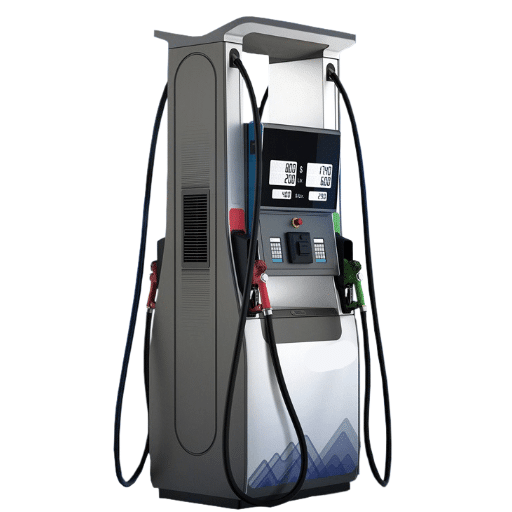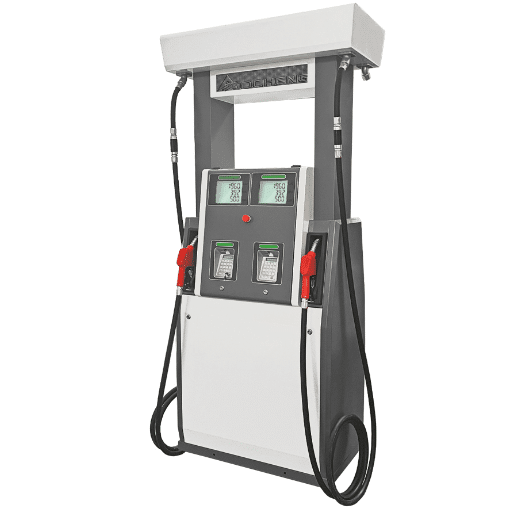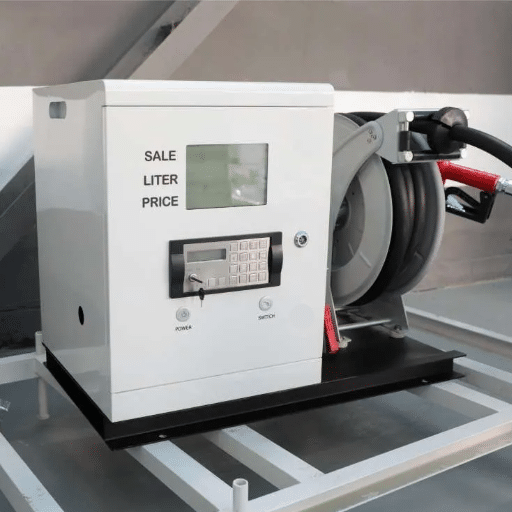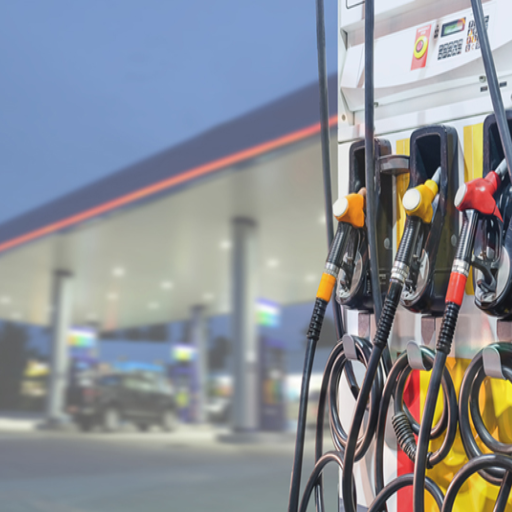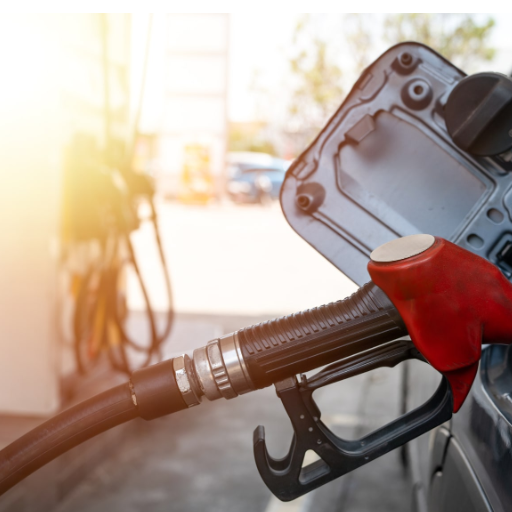Understanding the Gas Station Business

Running a gas station is centered on three basic things: selling fuel, running a convenience store, and maintaining the facility. Among these, fuel sales usually generate the most significant revenue, but profit margins associated with them depend on varying wholesale prices, taxes, and demand in the specific area. The convenience store’s operation gives the business extra income because it sells snacks, drinks, and other things that are in high demand with even higher profit margins than fuel. Maintenance of machines, including pumps and tanks, is a must to get rid of environmental and safety risks and to ensure smooth and safe operations. Nonetheless, the success factor in this business is location, service quality, and pricing strategy that gives competition a run for their money.
Overview of the Gas Station Industry
The gas station sector is undergoing major changes as a result of changes in energy policies, people’s preferences, and technological progress. A major factor for the electric vehicle (EV) trend is charging stations, which is one reason why gas stations are going to embrace the sale of different products. Moreover, the use of renewable resources is pushing biofuels and hydrogen fueling options to be more part of the usual practice in the industry.
The external factors, such as the instability of crude oil prices, government regulations, and local economic situations, among others, have a direct impact on the profitability of this industry. The gasoline retailers have been relying more and more on their convenience stores as the main source of their profits, selling not only quick-service food and drinks but also other consumer goods that are sure to attract customers to the fuel sales area.
The new tech, such as point-of-sale systems, mobile payment options, and automated fuel dispensers, is making operational excellence and customer experience even better. At the same time, the operators have to deal with issues like high operating expenses, managing the workforce, and the constant need to upgrade equipment in order to comply with the safety and environmental standards.
To be able to cope with these trends, a strategic focus on service diversification, resource efficiency, and investment in alternative fuels will be necessary to remain in the competition in the ever-changing market.
Benefits of Owning a Gas Station
The ownership of a gas station brings a lot of advantages, one of them being the steady income that can be generated. Gas stations have a great deal of demand for their fuel, and it is considered a basic need. Moreover, the combination of a convenience store with a gas station can be an excellent way to diversify income, providing extra profits from the sale of food, beverages, and retail items.
Another great benefit is the movement in strategy that gas station owners can use. Stations on the busy roads or near the main highways have a constant influx of customers, plus the owners can change the profile of their services on the fly, for example, by adding things like car wash, repair, or even alternative fuel facilities if those are the ones that consumers prefer. A gas station can be a very profitable business with sustainable long-term growth potential if it is properly managed and strategically invested in.
In addition, gas stations open up new avenues for experimentation, especially introducing renewable energy solutions such as electric vehicle (EV) charging stations, which can effectively lure the green-minded customer. These advancements, when combined with strong inventory management systems and operational efficiencies, can not only boost profitability but also create a stronger foothold within the market where competition is tough.
Challenges Faced by Gas Station Owners
Owning and managing a gas station comes with numerous challenges that need to be given special care and consideration through strategic planning. One of the biggest problems is fuel prices, which are usually very unstable and are dictated by various factors like global market fluctuations, supply chain disruptions, and geopolitical conflicts. Such unpredictability has a direct effect on the profit margins and thus the owners are forced to change their prices quickly to keep their customers happy.
High operational costs are another challenge, which include energy, equipment, and employee costs as well as compliance with regulations. Gas station owners are required to maintain very strict environmental and safety regulations, which can cost much more than simply building new storage tanks or installing environmental monitoring systems.
Moreover, traditional revenue streams are getting trucked by the competition coming from large convenience store chains and rising EV (electric vehicle) adoption. Thankfully, these challenges also highlight the importance of innovation and adaptability in the gas station business, which has to rely on the diversification of income through the addition of services such as convenience stores or fast-food outlets etc. Besides, owners need to keep pace with technology and modernize by adopting advanced point-of-sale systems and real-time inventory management to operate with high efficiency and make good profits even in the current market.
Startup Costs to Open a Gas Station
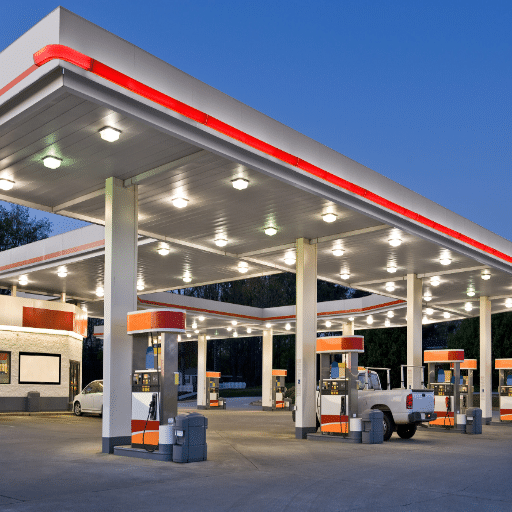
Important Note: Gas station opening demands a hefty amount of initial investment, which might go from $250,000 to more than $2 million, depending on aspects like location, scale, and features included. Major costs consist of acquiring or renting the land, building a new gas station or refurbishing an old one, installing and buying fuel tanks, and pump installation. Other initial expenses consist of the place’s license and permit fees, the purchase of stock, and staffing. Also necessary is to set aside money for insurance and initial promotion activities. The preparation of intricate financial planning and the backing of sufficient funds are fundamental to the successful launching, and so the operation will not be stopped.
Initial Investment Breakdown
Setting up a fuel station entails a large sum of money initially, whose amount will differ according to the geographical location, magnitude, and services offered. Typically, the cost of buying or leasing the land will vary between $100,000 and $2 million. Construction or refurbishment costs, as well as the installation of fuel storage tanks and dispensers, will usually take between $500,000 and $1.5 million. Licensing and permitting expenses can be an additional $50,000 to $200,000, depending on the locality’s laws. Stock acquisition, such as fuel and convenience store goods, will typically cost from $50,000 to $300,000. Staff recruitment and training will also incur an expense, where an average cost is $20,000 to $50,000 as the first payment. Furthermore, insurance premiums for liability, property, and environmental coverage are likely to vary from $25,000 to $50,000 per year. Marketing and branding efforts necessary for luring customers in the first instance may constitute $10,000 to $50,000 during the launch period. These numbers underline the necessity of detailed financial planning to guarantee an operation that does not run into trouble.
| Cost Category | Estimated Range |
|---|---|
| Land Purchase/Lease | $100,000 – $2,000,000 |
| Construction/Refurbishment & Fuel Systems | $500,000 – $1,500,000 |
| Licensing and Permits | $50,000 – $200,000 |
| Initial Inventory (Fuel & Store Products) | $50,000 – $300,000 |
| Staff Recruitment & Training | $20,000 – $50,000 |
| Insurance (Annual) | $25,000 – $50,000 |
| Marketing & Branding | $10,000 – $50,000 |
Cost to Build a Gas Station
The price of constructing a gas station can differ greatly depending on the site, the size, and the scale of the operations. The building, storage tanks, and fuel dispensers are normally around $2.5 million to $5 million in construction costs. It is assumed that this includes all the necessary components, such as underground fuel tanks, pumps, and convenience store facilities. Land acquisition costs can be very different depending on the location, with prices often starting around $100,000 but being able to go as high as $2 million in areas with a high demand for land.
The operational costs that consist of licenses, permits, and initial inventory may contribute a further $200,000 to $300,000. The environmental compliance and businesses like site preparation for underground systems can additionally raise expenses by $50,000 to $150,000 or more, which again depends on local regulations and geological conditions. Therefore, thorough site analysis and financial planning are critical to managing these costs effectively.
In addition to the above expenditures, marketing, staff recruitment, and insurance must be properly allocated to ensure a successful gas station launch. All in all, the total required investment to build and operate a gas station can be anywhere from $2.5 million to more than $7 million, based on the location and other business features added. This points out the necessity of detailed planning and market analysis before the execution of such a considerable investment.
Total Investment Summary: The complete investment to build and operate a gas station ranges from $2.5 million to over $7 million, depending on location and additional business features.
Ongoing Operational Expenses
Running a gas station entails various costs that recur regularly and that are necessary for the maintenance of profitable operations. The purchase of fuel, which is closely linked to the varying wholesale prices and the prevailing market conditions, is generally the largest operational expense and is thus ranked first among the operating costs. Employee compensation also comes to the fore as a major cost item that includes wages, benefits, and payroll taxes. The power that is used for lighting, fuel pumps, and refrigeration is classified under utilities, and the cost thereof represents a big chunk of monthly expenses. Moreover, the regular maintenance of infrastructure like pumps, tanks, and HVAC systems is obligatory not only for safety compliance but also for efficient operation.
Among other costs are the replenishing of the convenience store inventory, the costs of marketing to attract and keep customers, and the fees related to compliance with regulations, e.g., inspections and permits. The other fixed cost element is insurance premiums that offer liability risks and infrastructure damage protection. In a very competitive market, the above-mentioned ongoing expenses, if not managed properly, will ultimately lead to a loss in profits and operational instability.
Starting a Gas Station: Business Plan Essentials
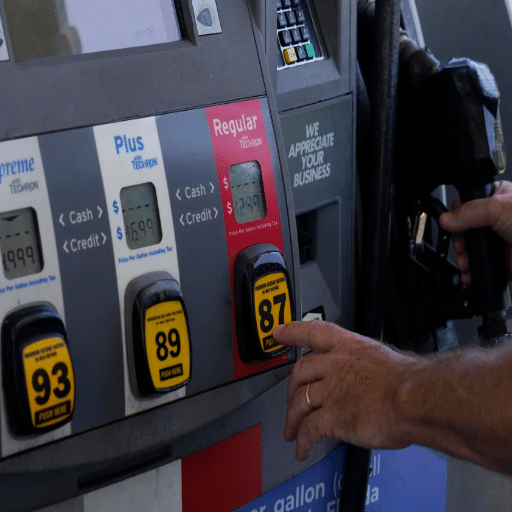
The success of a gas station depends significantly on the right location. The best site would be one that has high traffic, easy access, and is near main roads or highways. Moreover, taking into account local population statistics, competitors, and zoning laws will help you choose a spot that is both legally and commercially viable. Furthermore, it is important to conduct a cost-benefit analysis to compare potential earnings with the costs of the property and operating expenses to arrive at an informed decision.
Creating a Comprehensive Business Plan
In order to create a gas station business plan, one needs to incorporate a few important aspects that would guarantee an operating and profit-making activity in a strategic way.
- Executive Summary: Draw the mission, principal goals, and precise objectives for the gas station, in that order. It’s also good to provide the reasons for your business being different, the group of consumers you will attract, and the chance for your business to expand.
- Market Analysis: A detailed study of the local market should be the first step of this process. Specify the people you want as customers, give the number of competing businesses and the approximate level of competition they offer, and also do the market trend evaluation in terms of the demand for types of fuels (e.g., gasoline, diesel, and electric power) or ancillary services like convenience stores or car washes.
- Operational Strategy: Elaborate on the daily operation matters such as the required personnel, the fuel buying process, and the supply chain in general. Mention the operating hours, types of services, and the plans to fix the equipment for high-quality operation and performance.
- Location Analysis: Make stronger points concerning the site’s selection by talking about the location’s ease of access, the patterns of the movement of vehicles, how much and from where the gas station can be seen, and how close it is to the main roads. Don’t forget about zoning laws and legal requirements.
- Financial Planning: List down the detailed financial forecasts encompassing the sources of funds, or how much is estimated for startup costs, profit margins, breakeven analysis, and long-term sales targets. Also, point out the expenses of initial investments like land and equipment, as well as the recurring costs for the fuel stock and the workers.
- Marketing Strategy: Set out an explicit marketing plan to pull customers, giving examples such as loyalty programs, pricing strategies, advertising targeted at specific areas, and teaming up with nearby businesses to increase traffic.
- Risk Assessment: Take up the challenges of risk, such as changing fuel prices, regulatory actions, or the slump of the economy. Make up plans to neutralize the risks.
A properly composed business plan not only serves as a guiding map for the operation of the gas station but also acts as a tool for investment and loan acquisition through the demonstration of financial viability in the context of planning.
Identifying Your Target Market
The first and foremost step in the accomplishment of your gas station business would be identifying your target market. Start your assessment with your location and the people around it. Consider such factors as the population, their age, how much money they earn, and how they commute. Moreover, take into account the area’s characteristics, whether they are mainly residential, commercial, or industrial, because this will determine the customers’ needs and preferences.
After that, take a look at the other gas stations in your area, considering their customer base and their selling points. Finding out other gas stations around you will help you learn how to set yourself apart with the services mentioned above or with lower prices, quality fuel, and loyalty programs.
Finally, know that potential customers will have different behaviors. Are they quick service commuters, high-volume fuel stations for truck drivers, or a convenience store for locals? Your marketing strategy and service provision will then be directed to the very specific needs, thus you will not only get your ideal customers but also keep them. A thorough knowledge of your target market allows for a proper strategy, thus making your business more profitable.
Financial Projections and Funding Options
The first step in developing financial projections is to predict revenue by assessing the needs of your target market and the expected sales volume. Calculate operating costs by considering both fixed costs like rent or mortgage, utilities, and salaries, as well as variable costs such as stock and promotion. Determine possible profit margins by studying pricing and the competition in the industry. Make use of the profit and loss statements, cash flow forecasts, and balance sheets to map out your financial health for a period of 3-5 years.
When it comes to sources of finance, consider the classic ones like small business loans, borrowing against your sales, or getting money from a commercial bank. Also, think about government schemes that offer loans to small business owners, such as the SBA loans, as they usually come with better terms. In addition, you might want to consider equity financing, where you get investors or venture capitalists on board, and in return, you give them a stake in your company. Crowdfunding sites can also be a modern way to get funding while at the same time generating customers’ interest in your business. Choose the funding option that fits your financial needs, payment ability, and long-term business goals.
Buying vs. Franchising a Gas Station

The decision between buying an independent gas station and franchising one largely relies on your aspirations, financial capacity, and skills.
An independent gas station guarantees total freedom, since you alone are responsible for the branding, pricing, and operations. Nonetheless, this option demands a deep knowledge of the industry and includes a higher risk, as there will be no franchise support or an established reputation to rely on.
A gas station franchise gives one access to a ready-made business model, brand recognition, and the support of the franchisor with marketing and training. It does, in fact, require paying fees to the franchisor and following strict operational guidelines, but the risk is often reduced and the startup process made easier.
Assess your resources, market conditions, and readiness to operate solo before arriving at a decision. Both choices possess merits, yet the most suitable one will vary depending on your strategic business goals.
Advantages of Buying a Gas Station
- Consistent Demand for Fuel: Gasoline is classified as a basic necessity, and thus the demand remains constant throughout, irrespective of the economy. The customer base that is stable over time gives a stable stream of income.
- Multiple Revenue Streams: Besides the sale of fuel, many gas stations have other profit-generating activities like the operation of convenience stores, car washes, or restaurants, which not only help in the diversification of income but also the enhancement of profitability.
- Prime Locations: Very often, the gas stations are placed in an area where there is, or very close to, a significant traffic flow or near the highways that are frequently used by motorists, thus ensuring that customers can easily spot and reach them.
- Franchise Opportunities: Various gas stations that run on the basis of reputable brands are like being granted promotional thumbs-up, receiving marketing support, and getting brand consciousness, plus getting already established operational systems, which are some of the reasons why it is easier for franchise buyers to become successful.
- Potential for Business Growth: The new owners can make changes to the buildings, start loyalty programs, or increase the variety of products to be sold to not only please the customers but also earn more money.
- Relatively Lower Barriers to Entry: In contrast to constructing a gas station from the ground up, buying an existing one normally provides a faster route to enter the market with the existing infrastructure, skilled personnel, and a tested operating history.
Costs Involved in Gas Station Franchises
The costs involved with gas station franchises can be really different from one another, and they depend on many factors like location, brand, and size of the business. Usually, franchisees should prepare for the following major expenses:
- Initial Franchise Fee: The initial franchise fee is at an average of $20,000 to $50,000, which is dependent on the franchisor. The payment for this fee includes both the operation rights under the brand name and the use of the franchisor’s support systems.
- Real Estate and Construction Costs: Franchisees buying land and building a fully functioning gas station will face costs of at least $300,000 and more than $2 million in some cases. On the other hand, building a new station could cause one to go through a very high upfront cost, or leasing the old one may keep it lower.
- Equipment and Inventory: Pumps and tanks for fuel, signage, and facilities for operation, and so on might be invested in $200,000-$500,000 range. Initial inventory, like fuel and convenience store products, usually costs $50,000 to $150,000.
- Operating Capital: A franchisee needs to secure working capital that is enough to cover wages of employees, utilities, insurance, and marketing until the business becomes profitable. The range of a minimum of $100,000 to $300,000 is often suggested.
- Royalties and Fees: Gas station franchisors charge continuous royalties, which are usually 5-7% of gross sales, but some may also add advertising fees, which range from 1-3% of sales.
Bringing understanding of these costs is essential for prospective franchisees to be able to plan properly and raise the necessary capital for both the investment and the operation.
| Franchise Cost Category | Amount/Percentage |
|---|---|
| Initial Franchise Fee | $20,000 – $50,000 |
| Real Estate & Construction | $300,000 – $2,000,000+ |
| Equipment & Inventory | $200,000 – $500,000 |
| Initial Inventory | $50,000 – $150,000 |
| Operating Capital | $100,000 – $300,000 |
| Ongoing Royalties | 5-7% of gross sales |
| Advertising Fees | 1-3% of sales |
Choosing the Right Franchise Opportunity
The process of selecting the best gas station franchise involves a sequence of activities that includes a thorough investigation, strategic planning, and the consideration of several factors at once. Apart from that, carry out the analysis of the market demand as well as the competition in your preferred area first, because this will greatly determine the profitability. Check if the franchise does not exceed your financial capacity by looking into the start-up investment, the royalty fees, and the upkeep or the advertisement costs that may accrue. Rank the franchisors regarding their name coming out first, being the second one with a lot of growth, and having the best operational support. Look over the terms and conditions of their contracts and keep an eye out for flexibility and good incentives like exclusive areas or hands-on training programs.
Furthermore, take a look at the product lines and services that each franchise includes, for example, convenience store goods or fuel partnerships, as these can have a huge influence on the variety of the income stream. Getting in touch with the current franchisees will allow you to gain some very useful information about the daily running of the business and the level of support that the franchisor gives. With all this information gathered up and put together, you will be able to make a well-informed choice that suits both your objectives and the market situation. Always putting these issues first will mean that you will be investing in a franchise that has a strong potential for growth and that is in line with your expected profitability.
Permits and Licenses Required

The opening of a franchise usually necessitates the acquisition of different primary permits and licenses to carry on business lawfully. A general business license may be one of the permits that allows your business to operate in a particular area, and an Employer Identification Number (EIN) from the IRS for tax purposes may be another. Also, along with the specific health permits required for the franchise type, if your franchise deals with food and drinks, then those permits could be a part of the requirements in addition to zoning permits for the business to comply with local land-use regulations. Moreover, some sectors may need particular certifications or individual licenses to be in accordance with the regulations. It is essential to check these requirements with the respective local, state, and federal offices to ensure compliance and uninterrupted operations.
Essential Licenses for Gas Station Owners
Gas station ownership and operation necessitate the acquisition of various licenses and permits to adhere to the legal and safety requirements. A business license is paramount among them, giving authority to run the station within the territory. Furthermore, a seller’s permit is mandatory to handle the sales tax on gasoline and other retail items. Environmental permits, which are usually granted by the Environmental Protection Agency (EPA), are vital for the underground storage tank operations and the management of any environmental risks related to the fuel storage and dispensing activities. Fire safety permits, typically issued by local fire departments, are crucial for the enforcement of safety measures and the control of hazards related to the storage and use of flammable materials. Moreover, signage permits may be essential for the installation of outdoor ads and price displays for the fuels. The licensing process is a lengthy but necessary journey for every gas station that wants to be in the right legal standing and to provide a safe environment for its employees and customers while complying with the laws at the local, state, and federal levels.
| License/Permit Type | Issuing Authority | Purpose |
|---|---|---|
| Business License | Local Government | Authorization to operate within the territory |
| Seller’s Permit | State Tax Authority | Handle sales tax on gasoline and retail items |
| Environmental Permits | EPA | Underground storage tank operations and environmental risk management |
| Fire Safety Permits | Local Fire Department | Safety measures and hazard control for flammable materials |
| Signage Permits | Local Planning Department | Installation of outdoor advertising and fuel price displays |
| Employer Identification Number (EIN) | IRS | Tax identification and payroll purposes |
Navigating Local Regulations and Permits
I keep myself updated regarding local regulations and permits. I put great emphasis on concentrating my efforts on conducting in-depth research about the particular requirements in my region. I keep checking with local government offices to verify zoning rules, environmental guidelines, and safety standards to make sure that I comply. I collect all required documents, such as site plans, operational details, and safety procedures, at the beginning of the process to make it smoother. By being ahead of the game and neat, I can deal with any regulatory problems in a good way and conduct my business following the law.
Pro Tip: Start the permit and licensing process early in your planning phase. Many permits require extensive documentation and review periods that can take several months to complete. Early preparation ensures you won’t face delays in your opening timeline.
Compliance with Environmental Standards
To effectively verify compliance with environmental norms, it is necessary to know and follow the federal, state, and local laws that are set for the protection of the environment. The main actions usually performed consist of finding the laws that are relevant, for instance, the Clean Air Act or Clean Water Act, and then carrying out an operation that will cause the least negative impacts on the environment. On the whole, environmental audits are conducted in order to find out the state of emissions, waste management, and resource usage. Moreover, companies are to adopt green practices such as cutting down on energy use, selecting non-toxic materials, and safe disposal of waste categorized as hazardous. Keeping current records, training employees, and getting the necessary permits are all very important activities that show the company’s compliance with the regulations. Using the information from trusted sources, including governmental websites and environmental authorities, guarantees precise compliance strategies.
Environmental Compliance Warning: Non-compliance with environmental regulations can result in severe penalties, including heavy fines, operational shutdowns, and legal liability. Underground storage tank systems require regular inspections and maintenance to prevent leaks that could contaminate soil and groundwater. Always maintain detailed records of all environmental compliance activities.
Key Takeaways and Conclusions
Summary of Gas Station Investment
- Substantial Initial Investment: Opening a gas station requires significant capital, ranging from $250,000 to over $7 million depending on whether you’re buying existing infrastructure or building from scratch.
- Multiple Revenue Streams: Success in the gas station business comes from diversification – fuel sales, convenience stores, car washes, and increasingly, EV charging stations all contribute to profitability.
- Location is Critical: High-traffic areas near major roads and highways ensure consistent customer flow and are essential for long-term success.
- Franchise vs. Independent: Franchising offers brand recognition and support but requires ongoing fees (5-7% royalties), while independent ownership provides complete control but higher risk.
- Regulatory Compliance: Extensive licensing, permitting, and environmental compliance requirements must be met and maintained throughout operations.
- Ongoing Operational Costs: Fuel inventory, employee wages, utilities, maintenance, insurance, and compliance costs require careful management to maintain profitability.
- Industry Evolution: The shift toward electric vehicles and alternative fuels requires forward-thinking investment strategies to remain competitive.
- Detailed Planning Essential: A comprehensive business plan covering market analysis, financial projections, operational strategies, and risk assessment is crucial for success.
Final Recommendations
For Prospective Buyers: Conduct thorough due diligence on location, competition, and local market conditions. Secure adequate funding that covers not just startup costs but 6-12 months of operational expenses. Consider starting with a franchise if you’re new to the industry, as the support and established systems can significantly reduce risk.
For Franchise Seekers: Compare multiple franchise opportunities, speak with existing franchisees, and carefully review all contractual obligations. Ensure the franchise’s vision aligns with future market trends, particularly regarding alternative fuel options.
For All Investors: Stay adaptable and ready to evolve your business model. Invest in technology for efficient operations, prioritize customer service, and consider adding services that differentiate you from competitors. The gas station business can be highly profitable with proper planning, strategic location selection, and effective management.
Ready to Start Your Gas Station Business?
With careful planning, adequate funding, and strategic execution, owning a gas station can provide steady income and long-term growth opportunities. Use this guide as your roadmap to making informed decisions and building a successful, profitable business in the evolving fuel retail industry.
Reference Sources
“Optimizing Number and Locations of Alternative-Fuel Stations Using a Multi-Criteria Approach”
Frequently Asked Questions (FAQs)
What are the startup costs to open a gas station?
The startup costs to open a gas station depend on the size of your gas station, location, and whether you will buy or rent the property. On average, the total cost can be up to $2 million, which includes land acquisition, construction, and equipment costs in addition to the initial inventory.
How much does it cost to buy a gas station franchise?
It usually costs an initial franchise fee of $10,000 to $50,000, and along with that, you’ll have an ongoing royalty based on your revenue to buy a gas station franchise. Furthermore, you will have to factor in construction, gas pumps, and inventory costs, which could make your total investment as high as $1-2 million, depending on the brand and location.
What are the costs for opening a gas station in the US?
The costs for opening a gas station in the US include land purchase or lease payments, construction costs, and permits. The average initial investment can range from $1 million to $2 million. The other ongoing expenses include liability insurance, employee salaries, and utility bills.
What is the cost of starting a gas station business?
The cost of starting a gas station business has numerous factors, such as construction costs, supplier contracts, and the gas station’s size. You should also think about costs for obtaining the necessary permits and licenses, which can add significantly to your initial investment.
What permits do I need to open a gas station?
A gas station requires several permits, such as a business license, environmental permits like a phase 1 environmental assessment, and installation of gas pumps. The requirements are not the same for each state and locality; thus, it is important to consult local authorities before proceeding.
How does location influence gas station startup costs?
Startup costs will be greatly affected by the location of the gas station. A site of a high-traffic area will be subjected to competition and higher land costs; thus, a large investment might be necessary. On the other hand, lower costs might be the case in a gas station in a rural area, but it will not only have lower yearly income but also lower customer and traffic volume.
What kind of liability insurance do gas station owners need?
The owners of gas stations commonly obtain general liability insurance to cover claims for accidents or injuries that happen on the premises. Moreover, you might think about getting liability insurance for environmental hazards, just like how the fuel sales nature is, and that spills or leaks happen sometimes.
What is the average annual revenue for a gas station?
The average annual revenue of a gas station can differ a lot depending on the place where it is located, its size, and the services rendered, for example, convenience store sales. A great location, full-service gas station may yield over $1 million per year in revenue, while it may not be the same for smaller stations that might be situated in a less privileged location.
How do gas stations operate in terms of supplier contracts?
Gas stations function by signing supplier contracts with fuel distributors, thus establishing the price and delivery of gasoline. The terms of these contracts may have a significant impact on the gas station’s profitability by determining the price per gallon that will be charged to the customers and the gas station’s profit margin.

